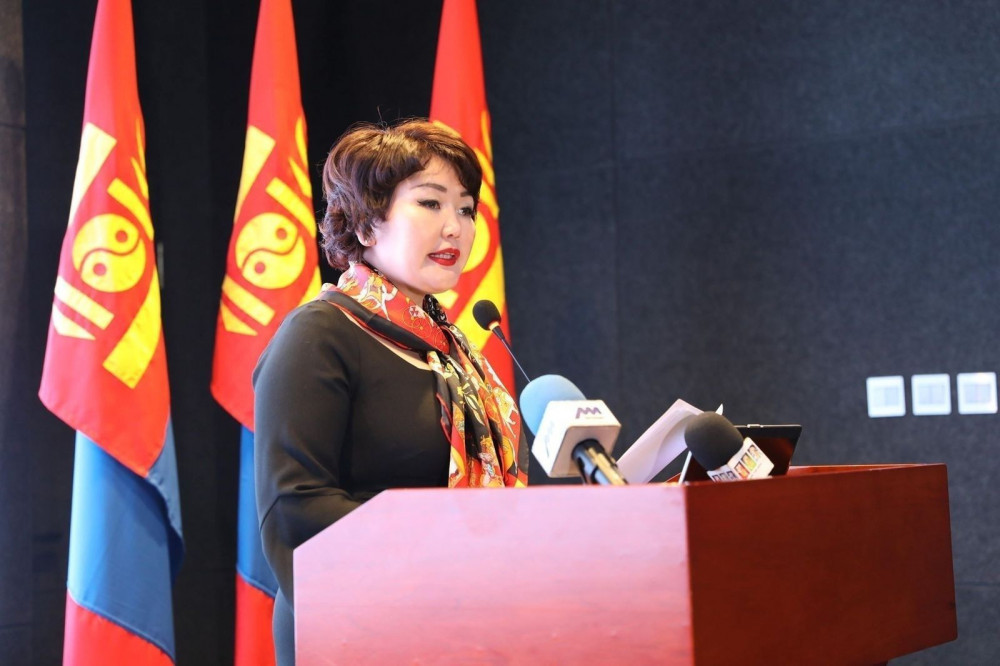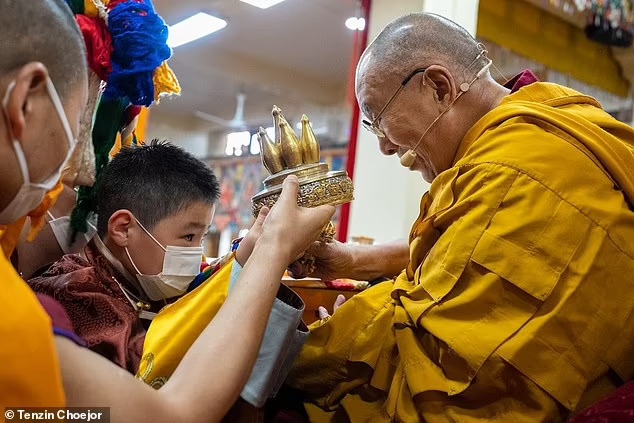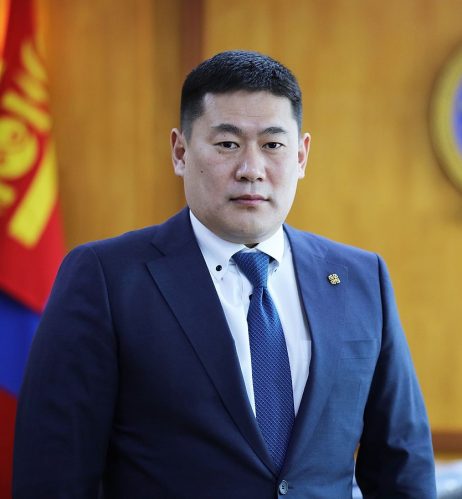Events
| Name | organizer | Where |
|---|---|---|
| MBCC “Doing Business with Mongolia seminar and Christmas Receptiom” Dec 10. 2025 London UK | MBCCI | London UK Goodman LLC |
NEWS

The First Thermal Coal E-Auction Held www.montsame.mn
According to the MSE, "Erdenes Tavantolgoi" JSC's first thermal coal e-auction was organized on March 24. During the trade, 15 lots or 96,000 tons of thermal coal were traded and the price increased by 7.32 percent, from USD 68.30 to USD 73.30.
"Erdenes Tavantolgoi" JSC used to sell coal at a mine-mouth price of USD 9.5 in 2020, while on March 24, 2023, they managed to sell at an ex-border price of USD 73.30.

8-year-old Mongolian child will be the third religious leader of Tibet: Dalai Lama completed the rituals in Himachal, said- meeting the child in Mongolia is auspicious www.newscubic.co.in
The 87-year-old Tibetan religious leader Dalai Lama has given a big blow to China. He has made an 8-year-old Mongolian child born in America the third highest religious leader of Tibetan Buddhism. He is one of the twins. The Dalai Lama called this child the reincarnation of the 10th Khalkha Jetsun Dhampa Rinpoche.
The ceremony of meeting the new religious leader took place on March 8 in Dharamsala, Himachal Pradesh, but its information has now come to the fore. It was attended by 600 Mongolians at the ceremony. The Dalai Lama said – Our ancestors had deep relations with the Krishnacharya dynasty of Chakrasamvar. One of these also established a monastery in Mongolia. In such a situation, it is very auspicious to meet the third religious leader in Mongolia.
Celebration in Mongolia on the news of the child
According to Mongolian media, the new Tibetan cleric is one of the twins of a maths professor from Mongolia. The names of these children are Agudai and Achiltai. And the child’s grandmother has been a Member of Parliament in Mongolia. People started celebrating in Mongolia as soon as the news of the child being a religious leader came out. There was great enthusiasm among the Buddhists during the ceremony. On the other hand, according to some media reports, there were reports earlier also of a Mongolian child being a religious leader, but the Dalai Lama has now confirmed it.
China had said – we will choose a Buddhist leader
This step of the Dalai Lama is considered politically important. China wants to appoint its people in the tradition of Tibetan Buddhism, so that there is no possibility of any rebellion in Tibet. China has also announced that the country will recognize only those Buddhist leaders whom the Chinese government will choose. Even before this, in 1995, when the Dalai Lama chose the second highest religious leader, the Panchen Lama, he was jailed by the Chinese authorities. After this, China appointed a religious leader of its own choosing to the post. Now after getting the third Tibetan religious leader, there is concern among Buddhists about his safety.
Dalai Lama came to Himachal from China in 1959
The Dalai Lama is the religious leader of Tibet. He was born in 1935. He was said to be the reincarnation of the previous Dalai Lama when he was 2 years old. After this he was recognized as the 14th Dalai Lama. The Dalai Lama fled from Tibet in 1959 after China occupied it. Since then he has been living in Dharamshala, Himachal Pradesh. The Dalai Lama was awarded the Nobel Peace Prize in 1989. However, China calls them separatists who are a threat to Tibet.

SUMO/ Mongolian Kiribayama clinches his 1st career title www.asahi.com
New sekiwake Kiribayama clinched his first career title March 26 by defeating Komusubi Daieisho twice on the last day of the Spring Grand Sumo Tournament.
Kiribayama, who is from Mongolia, entered the 15th and final day of the meet at Edion Arena Osaka with one win behind front runner Daieisho.
Kiribayama adopted a thrust down to force a playoff by sending Daieisho out of the ring.
The two wrestlers each had 12 wins and three losses after the bout.
The playoff was held a few minutes later. Kiribayama won again with thrust down after a close fight that required a ringside consultation.
Kiribayama, who was born to a family of nomads in Dornod Province in eastern Mongolia, was a judo enthusiast before coming to Japan for a trial, where he caught the attention of stable master Michinoku.
Kiribayama made his professional debut at the 2015 Summer Grand Sumo Tournament when he was 19 years old.
He was promoted to the top division in the New Year Grand Sumo Tournament in 2020.
Kiribayama is renowned for not giving up in a fight, as well as his technique of grabbing the front of his opponent’s mawashi belt.
Kiribayama will aim to be promoted to ozeki rank at the Summer Grand Sumo Tournament in May.
One criterion for the promotion is taking 33 wins while holding one of the three ranks below Yokozuna within the three latest tournaments.
Kiribayama clinched 23 wins in the last two tournaments, including 11 wins in the previous New Year tourney as Komusubi.
The tournament was the fourth held without solo Yokozuna Terunofuji, who withdrew before Day 1.
Solo Ozeki Takakeisho also pulled out midway through the tourney.
This was the first tournament in more than 90 years to be held without a yokozuna and an ozeki, sumo’s two highest ranks.
Kiribayama is the ninth Mongolian-born champion, following Asashoryu with 25 titles, Hakuho with 45, Harumafuji with nine, Kyokutenho with one, Kakuryu with six, Terunofuji with seven, Tamawashi with two and Ichinojo with one.

Turkish President Expresses His Gratitude for Humanitarian Aid www.montsame.mn
President of the Republic of Türkiye Recep Tayyip Erdoğan sent a Letter of Gratitude to the President of Mongolia Ukhnaagiin Khurelsukh. President Recep Tayyip Erdoğan expressed his appreciation for sending the humanitarian aid and rescue team, stressing that Türkiye will never forget the Mongolians’ helping hand.
On March 22, State Secretary of the Ministry of Foreign Affairs of Mongolia Mr. Ankhbayar received Ambassador Extraordinary and Plenipotentiary of the Republic of Türkiye to Mongolia Zafer Ates. At the meeting, the Ambassador handed over the Certificate of Gratitude to the Ministry of Mongolian Foreign Affairs for providing the Republic of Türkiye with immediate humanitarian aid in the difficult time of the devastating earthquakes that hit Southern Türkiye.
The Ambassador also expressed his commitment to strengthening the comprehensive partnership relations between the two countries.

Celebrated poet was accused of collaborating with foreign intelligence service www.gogo.mn
The Capital City Prosecutor's Office made a bill of particulars on the case of Ts.Khulan and transferred it to the court. The General Intelligence Agency of Mongolia conducted an investigation and made a bill of particulars on the case “Ts.Khulan agreed to cooperate with the intelligence service of a foreign country” according to the Article 19.4 of the Criminal Code and transferred it to the Criminal Court of First Instance of Sukhbaatar District.
Article 19.4 Illegal cooperation with foreign intelligence agency, agent
1. An action deliberately committed by a citizen of Mongolia who agrees to collaborate with foreign intelligence agency and collaborates; stealing, collection, storage, or delivery of data, documents and objects constituting a state or military secret with the view of transferring to a foreign organization or agent shall be punishable by imprisonment for a term of eight up to fifteen years.
Ts.Khulan has been detained since January 18, 2023. Although she was detained for 48 hours, the district court continued to extend the period at the request of the prosecutor.
In January, 2023, Mongolian Writers’ Union sent an official letter to the General Intelligence Agency of Mongolia that writer Ts.Khulan might be a victim of an unproven case and a political victim. It is not clear which country's intelligence agency she collaborated with.
In 2017, President Kh.Battulga issued a decree and appointed State Honored Cultural Figure Ts.Khulan as his Cultural and Religious Policy Advisor.
Khulan Tsoodol, the Cultural and Religious Policy Advisor to the President, is:
Laureate of the 100 Best Works in Literature Award from the Institute for World Literature (2009),
A member of board of the Project on Translating Ganjuur and Danjuur sutras
An academic candidate at the Faculty of Oriental Studies at Saint Petersburg State University
Former director of the State Puppet Theater, created important works such as "Mongoliin Suut" and "Myal Bogd's Biography" and played them on the theater stage.
Author of more than 10 publications of literature, translation and journalistic works. And she speaks Russian and English.

China demanding to approve Mongolia’s top religious figure? www.tibetanreview.net
The Dalai Lama’s recognition of the reincarnation of Mongolia’s top religious figure, the tenth Khalkha Jetsun Dhampa Rinpoché, is reportedly being complicated by China’s nudge that its approval be sought for his enthronement, according to several international media reports in recent days.
A Mongolian boy with US dual-nationality has been revealed as the incarnation of the third most important spiritual leader in Tibetan Buddhism and was pictured for the first time alongside the Dalai Lama, reported the dailymail.co.uk Mar 23. While it is not clear on what basis the report calls him “the third most important spiritual leader in Tibetan Buddhism”, inasmuch as there is no hierarchical structure in Tibetan Buddhism, it is a fact that Khalkha Jetsun Dhampa is the top religious figure of Mongolia.
The report noted that rumours about the boy’s identity had swirled around the spiritual community for years, but that his existence has only now been confirmed with his public appearance in India, where the Dalai Lama lives in exile.
Present at the ceremony in Dharamsala on Mar 8 were also 600 Mongolians who came to celebrate their new spiritual leader, the report said.
The report speculated that the unveiling could spark fury in China, which had previously said it will only recognise Tibetan Buddhist spiritual leaders their special government-approved appointees had chosen. But this could be a misreading of the Chinese government’s intention as Mongolia is not under Chinese rule, as is the case with occupied Tibet.
Still, referring to a report by The Times, the report said that in Mongolia, the news about the Dalai Lama and his ceremony with the young boy, resulted in intense excitement among Buddhists in the country as well as “contempt among secular nationalists and alarm among those who feat that it will provoke the rage of the country’s neighbour, China”.
Despite the 9th Jetsun Dhampa’s wish for only the Dalai Lama to recognize his successor, China is seemingly nudging Mongolia to seek its approval before acknowledging a new leader. This if true would be an outrageous interference in the religious affairs of Mongolia. However, this tactic is part of China’s broader strategy to control Buddhism beyond its borders, with Mongolia being a crucial piece of the puzzle, said thediplomat.com Mar 23.
As Buddhism is deeply interwoven with Mongolia’s culture, history, and ideas of sovereignty and democracy, the country’s economic and geopolitical future hangs in the balance, the report said.
Robbie Barnett, a Tibet expert at SOAS University of London, has told The Times: “It can be taken by China as a challenge to their past claim to sole authority in choosing lamas.
“These things can cascade into confrontation with China, which could penalise Mongolia in damaging ways.”
Meanwhile, in the Mongolian city of Ulan Bator, the boy as the reincarnation of the spiritual leader has caused quite a stir, as the boy is the scion of one of the city’s richest business and political dynasties under father Altannar Chinchuluun and mother Monkhnasam Narmandakh, said the dailymail.co.uk report.
This is why the Mongolian government has remained tight-lipped about the recent appearance of the Jetsun Dhampa, as they fear similar responses from China like 2016, the report said.
That was the year in which the Dalai Lama visited Mongolia and Beijing expressed its rage by imposing several measures on the country like delaying loans or closing the border, which caused Ulan Bator to ban him from visiting Mongolia again, the report noted.

Mongolia and Great Britain make waves amid Georgia's judo heroes www.euronews.com
Day two of the Tbilisi Grand Slam picked up on the incredible momentum of the first, with the stadium packed full of judo-crazy fans: few crowds on the World tour match the passion of Georgian supporters.
And it was Great Britain's Lucy Renshall who defeated Laura Fazliu from Kosovo to take the -63kg gold - a merited reward for her consistently strong performances at the highest level.
"Yeah it’s so nice just walking out the arena you hear people cheering, and we don’t have a big team here so it’s definitely not all my team," Renshall said. "When you’re going for a big throw you can hear the crowd, really going for it, so it’s nice, it’s motivating, it’s a good atmosphere."
One incredible Ippon after another
Mongolian youngster Erdenebayar Batzaya was on blistering form all-day - producing one incredible Ippon after another at -73kg
And he took the final against Uzbekhistan's Obidkhon Nomonov, with yet another Ippon deep into golden score.
Vlad Marinescu, Director General of the IJF, handed out the medals.
“I am so happy that my explosive techniques worked throughout the day," Batzaya said afterwards. "And that I was able to score like that against my opponents. I am so grateful.”
Enormous hip throw
Greek powerhouse Elisavet Teltsidou blasted her way to the -70kg final, an enormous hip throw the highlight of her qualifying bouts.
In the final, she won a tactical victory over the Dutch world and Olympic medallist Sanne van Dijke.
Austria's Wachid Borchashvili came out top of a tough -81kg contest against Kazakhstan’s Abylaikhan Zhubanazar, thanks to an effective dropping technique.
Local hero Lasha Shavdatuashvili was fighting today.
He's the only Georgian to have taken all three major titles - World, European and Olympic - and is a legend of the sport. Although he only managed to take bronze, his every move was greeted with raucous cheers from the crowd.
Always the sportsman, he's an inspiration to everyone.
Don’t miss the final day of the Tbilisi Grand Slam tomorrow.

L.Oyun-Erdene: We must expose the coal mafia if we want to develop Mongolia www.gogo.mn
L.Oyun-Erdene, the Prime Minister of Mongolia, gave information at the cabinet meeting on March 24.
Coal and copper are two of the four main mining products, accounting for 93% of Mongolia's exports. Mongolia has two big groups: coal and copper. It is no secret that there is a group of people who want to buy all of them and hold politics hostage through banks. In the past, funds have been raised and court appointments have been made.
A coal mafia must be exposed if Mongolia wants to develop in the future. Look at the economic growth and budget outperformance associated with the package of measures in Tavan Tolgoi. It means that there was a large amount of hidden economy. There are many hidden problems. It is hard to discuss justice and politics if the transparency of coal and copper is not established in the next 10-20 years. Therefore, we are going to change this situation. It doesn't matter who it is; MPP or DP.
Therefore, T.Ayursaikhan told me that he wants to quit his job and to be investigated. Many problems related to 49 percent of Erdenet mining corporation and Oyutolgoi are related to Kh.Battulga and T.Elbegdorj, the two former presidents elected from the Democratic Party.

Team Mongolia Gets off to a Flying Start with Victory www.montsame.mn
The IIHF World Championship Division IV kicked off in Steppe Arena of Ulaanbaatar, Mongolia on March 23, 2023. This Tournament is being held under the auspice of President of Mongolia Ukhnaagiin Khurelsukh.
The first game was between the Philippines and Indonesia and finished by the win of the Philippines with a score of 14-0. The Opening Ceremony of the Championship was solemnly held at 5:30 pm. The IIHF and Mongolia warmly welcomed the players, officials, fans, and everyone who attended the Ceremony. The Steppe Arena with a seating capacity of 2600 to 3600 was full of audience.
Team Mongolia got off to a flying start with an 8-0 victory against Kuwait in its first game started at 6:00 pm. There were four goals for Mishigsuren Chinzolboo, while goalie Bayarsaikhan Munkhbold shared 14 saves to blank the opposition. Mongolia made splendid Shots on Goal (SVG), reaching 56, while Kuwait’s SVG was 14.
Upcoming Games:
3/25/2023
2:00 pm – Indonesia vs. Kuwait
6:00 pm – Philippines vs. Mongolia
3/26/2023
2:00 pm – Philippines vs. Kuwait
6:00 pm – Indonesia vs. Mongolia

Your E-Visa To Be Ready In 3 Steps www.montsame.mn
In connection with the declaration of 2023-2025, the “Years to Visit Mongolia” by the Government of Mongolia, the list of countries whose nationals are eligible to apply for Mongolian e-visa has been revised, covering 99 countries.
Citizens of the countries on this list, including European countries, Australia, and New Zeland, can apply for three types of e-visas, which are Tourist /K2/, Participant in cultural and sports competition /K4/ and Transit /K6/ from anywhere in the world.
Only three simple steps are required to apply for a Mongolian e-visa:
1. Go to https://evisa.mn/ ;
2. Fill out the application form accurately and completely;
3. Pay the e-visa fee online.
Your e-visa will be sent to your e-mail address within 48 hours.
Since October 2021, the Immigration Agency of Mongolia has issued over 9000 e-visas.
- «
- 1
- 2
- 3
- 4
- 5
- 6
- 7
- 8
- 9
- 10
- 11
- 12
- 13
- 14
- 15
- 16
- 17
- 18
- 19
- 20
- 21
- 22
- 23
- 24
- 25
- 26
- 27
- 28
- 29
- 30
- 31
- 32
- 33
- 34
- 35
- 36
- 37
- 38
- 39
- 40
- 41
- 42
- 43
- 44
- 45
- 46
- 47
- 48
- 49
- 50
- 51
- 52
- 53
- 54
- 55
- 56
- 57
- 58
- 59
- 60
- 61
- 62
- 63
- 64
- 65
- 66
- 67
- 68
- 69
- 70
- 71
- 72
- 73
- 74
- 75
- 76
- 77
- 78
- 79
- 80
- 81
- 82
- 83
- 84
- 85
- 86
- 87
- 88
- 89
- 90
- 91
- 92
- 93
- 94
- 95
- 96
- 97
- 98
- 99
- 100
- 101
- 102
- 103
- 104
- 105
- 106
- 107
- 108
- 109
- 110
- 111
- 112
- 113
- 114
- 115
- 116
- 117
- 118
- 119
- 120
- 121
- 122
- 123
- 124
- 125
- 126
- 127
- 128
- 129
- 130
- 131
- 132
- 133
- 134
- 135
- 136
- 137
- 138
- 139
- 140
- 141
- 142
- 143
- 144
- 145
- 146
- 147
- 148
- 149
- 150
- 151
- 152
- 153
- 154
- 155
- 156
- 157
- 158
- 159
- 160
- 161
- 162
- 163
- 164
- 165
- 166
- 167
- 168
- 169
- 170
- 171
- 172
- 173
- 174
- 175
- 176
- 177
- 178
- 179
- 180
- 181
- 182
- 183
- 184
- 185
- 186
- 187
- 188
- 189
- 190
- 191
- 192
- 193
- 194
- 195
- 196
- 197
- 198
- 199
- 200
- 201
- 202
- 203
- 204
- 205
- 206
- 207
- 208
- 209
- 210
- 211
- 212
- 213
- 214
- 215
- 216
- 217
- 218
- 219
- 220
- 221
- 222
- 223
- 224
- 225
- 226
- 227
- 228
- 229
- 230
- 231
- 232
- 233
- 234
- 235
- 236
- 237
- 238
- 239
- 240
- 241
- 242
- 243
- 244
- 245
- 246
- 247
- 248
- 249
- 250
- 251
- 252
- 253
- 254
- 255
- 256
- 257
- 258
- 259
- 260
- 261
- 262
- 263
- 264
- 265
- 266
- 267
- 268
- 269
- 270
- 271
- 272
- 273
- 274
- 275
- 276
- 277
- 278
- 279
- 280
- 281
- 282
- 283
- 284
- 285
- 286
- 287
- 288
- 289
- 290
- 291
- 292
- 293
- 294
- 295
- 296
- 297
- 298
- 299
- 300
- 301
- 302
- 303
- 304
- 305
- 306
- 307
- 308
- 309
- 310
- 311
- 312
- 313
- 314
- 315
- 316
- 317
- 318
- 319
- 320
- 321
- 322
- 323
- 324
- 325
- 326
- 327
- 328
- 329
- 330
- 331
- 332
- 333
- 334
- 335
- 336
- 337
- 338
- 339
- 340
- 341
- 342
- 343
- 344
- 345
- 346
- 347
- 348
- 349
- 350
- 351
- 352
- 353
- 354
- 355
- 356
- 357
- 358
- 359
- 360
- 361
- 362
- 363
- 364
- 365
- 366
- 367
- 368
- 369
- 370
- 371
- 372
- 373
- 374
- 375
- 376
- 377
- 378
- 379
- 380
- 381
- 382
- 383
- 384
- 385
- 386
- 387
- 388
- 389
- 390
- 391
- 392
- 393
- 394
- 395
- 396
- 397
- 398
- 399
- 400
- 401
- 402
- 403
- 404
- 405
- 406
- 407
- 408
- 409
- 410
- 411
- 412
- 413
- 414
- 415
- 416
- 417
- 418
- 419
- 420
- 421
- 422
- 423
- 424
- 425
- 426
- 427
- 428
- 429
- 430
- 431
- 432
- 433
- 434
- 435
- 436
- 437
- 438
- 439
- 440
- 441
- 442
- 443
- 444
- 445
- 446
- 447
- 448
- 449
- 450
- 451
- 452
- 453
- 454
- 455
- 456
- 457
- 458
- 459
- 460
- 461
- 462
- 463
- 464
- 465
- 466
- 467
- 468
- 469
- 470
- 471
- 472
- 473
- 474
- 475
- 476
- 477
- 478
- 479
- 480
- 481
- 482
- 483
- 484
- 485
- 486
- 487
- 488
- 489
- 490
- 491
- 492
- 493
- 494
- 495
- 496
- 497
- 498
- 499
- 500
- 501
- 502
- 503
- 504
- 505
- 506
- 507
- 508
- 509
- 510
- 511
- 512
- 513
- 514
- 515
- 516
- 517
- 518
- 519
- 520
- 521
- 522
- 523
- 524
- 525
- 526
- 527
- 528
- 529
- 530
- 531
- 532
- 533
- 534
- 535
- 536
- 537
- 538
- 539
- 540
- 541
- 542
- 543
- 544
- 545
- 546
- 547
- 548
- 549
- 550
- 551
- 552
- 553
- 554
- 555
- 556
- 557
- 558
- 559
- 560
- 561
- 562
- 563
- 564
- 565
- 566
- 567
- 568
- 569
- 570
- 571
- 572
- 573
- 574
- 575
- 576
- 577
- 578
- 579
- 580
- 581
- 582
- 583
- 584
- 585
- 586
- 587
- 588
- 589
- 590
- 591
- 592
- 593
- 594
- 595
- 596
- 597
- 598
- 599
- 600
- 601
- 602
- 603
- 604
- 605
- 606
- 607
- 608
- 609
- 610
- 611
- 612
- 613
- 614
- 615
- 616
- 617
- 618
- 619
- 620
- 621
- 622
- 623
- 624
- 625
- 626
- 627
- 628
- 629
- 630
- 631
- 632
- 633
- 634
- 635
- 636
- 637
- 638
- 639
- 640
- 641
- 642
- 643
- 644
- 645
- 646
- 647
- 648
- 649
- 650
- 651
- 652
- 653
- 654
- 655
- 656
- 657
- 658
- 659
- 660
- 661
- 662
- 663
- 664
- 665
- 666
- 667
- 668
- 669
- 670
- 671
- 672
- 673
- 674
- 675
- 676
- 677
- 678
- 679
- 680
- 681
- 682
- 683
- 684
- 685
- 686
- 687
- 688
- 689
- 690
- 691
- 692
- 693
- 694
- 695
- 696
- 697
- 698
- 699
- 700
- 701
- 702
- 703
- 704
- 705
- 706
- 707
- 708
- 709
- 710
- 711
- 712
- 713
- 714
- 715
- 716
- 717
- 718
- 719
- 720
- 721
- 722
- 723
- 724
- 725
- 726
- 727
- 728
- 729
- 730
- 731
- 732
- 733
- 734
- 735
- 736
- 737
- 738
- 739
- 740
- 741
- 742
- 743
- 744
- 745
- 746
- 747
- 748
- 749
- 750
- 751
- 752
- 753
- 754
- 755
- 756
- 757
- 758
- 759
- 760
- 761
- 762
- 763
- 764
- 765
- 766
- 767
- 768
- 769
- 770
- 771
- 772
- 773
- 774
- 775
- 776
- 777
- 778
- 779
- 780
- 781
- 782
- 783
- 784
- 785
- 786
- 787
- 788
- 789
- 790
- 791
- 792
- 793
- 794
- 795
- 796
- 797
- 798
- 799
- 800
- 801
- 802
- 803
- 804
- 805
- 806
- 807
- 808
- 809
- 810
- 811
- 812
- 813
- 814
- 815
- 816
- 817
- 818
- 819
- 820
- 821
- 822
- 823
- 824
- 825
- 826
- 827
- 828
- 829
- 830
- 831
- 832
- 833
- 834
- 835
- 836
- 837
- 838
- 839
- 840
- 841
- 842
- 843
- 844
- 845
- 846
- 847
- 848
- 849
- 850
- 851
- 852
- 853
- 854
- 855
- 856
- 857
- 858
- 859
- 860
- 861
- 862
- 863
- 864
- 865
- 866
- 867
- 868
- 869
- 870
- 871
- 872
- 873
- 874
- 875
- 876
- 877
- 878
- 879
- 880
- 881
- 882
- 883
- 884
- 885
- 886
- 887
- 888
- 889
- 890
- 891
- 892
- 893
- 894
- 895
- 896
- 897
- 898
- 899
- 900
- 901
- 902
- 903
- 904
- 905
- 906
- 907
- 908
- 909
- 910
- 911
- 912
- 913
- 914
- 915
- 916
- 917
- 918
- 919
- 920
- 921
- 922
- 923
- 924
- 925
- 926
- 927
- 928
- 929
- 930
- 931
- 932
- 933
- 934
- 935
- 936
- 937
- 938
- 939
- 940
- 941
- 942
- 943
- 944
- 945
- 946
- 947
- 948
- 949
- 950
- 951
- 952
- 953
- 954
- 955
- 956
- 957
- 958
- 959
- 960
- 961
- 962
- 963
- 964
- 965
- 966
- 967
- 968
- 969
- 970
- 971
- 972
- 973
- 974
- 975
- 976
- 977
- 978
- 979
- 980
- 981
- 982
- 983
- 984
- 985
- 986
- 987
- 988
- 989
- 990
- 991
- 992
- 993
- 994
- 995
- 996
- 997
- 998
- 999
- 1000
- 1001
- 1002
- 1003
- 1004
- 1005
- 1006
- 1007
- 1008
- 1009
- 1010
- 1011
- 1012
- 1013
- 1014
- 1015
- 1016
- 1017
- 1018
- 1019
- 1020
- 1021
- 1022
- 1023
- 1024
- 1025
- 1026
- 1027
- 1028
- 1029
- 1030
- 1031
- 1032
- 1033
- 1034
- 1035
- 1036
- 1037
- 1038
- 1039
- 1040
- 1041
- 1042
- 1043
- 1044
- 1045
- 1046
- 1047
- 1048
- 1049
- 1050
- 1051
- 1052
- 1053
- 1054
- 1055
- 1056
- 1057
- 1058
- 1059
- 1060
- 1061
- 1062
- 1063
- 1064
- 1065
- 1066
- 1067
- 1068
- 1069
- 1070
- 1071
- 1072
- 1073
- 1074
- 1075
- 1076
- 1077
- 1078
- 1079
- 1080
- 1081
- 1082
- 1083
- 1084
- 1085
- 1086
- 1087
- 1088
- 1089
- 1090
- 1091
- 1092
- 1093
- 1094
- 1095
- 1096
- 1097
- 1098
- 1099
- 1100
- 1101
- 1102
- 1103
- 1104
- 1105
- 1106
- 1107
- 1108
- 1109
- 1110
- 1111
- 1112
- 1113
- 1114
- 1115
- 1116
- 1117
- 1118
- 1119
- 1120
- 1121
- 1122
- 1123
- 1124
- 1125
- 1126
- 1127
- 1128
- 1129
- 1130
- 1131
- 1132
- 1133
- 1134
- 1135
- 1136
- 1137
- 1138
- 1139
- 1140
- 1141
- 1142
- 1143
- 1144
- 1145
- 1146
- 1147
- 1148
- 1149
- 1150
- 1151
- 1152
- 1153
- 1154
- 1155
- 1156
- 1157
- 1158
- 1159
- 1160
- 1161
- 1162
- 1163
- 1164
- 1165
- 1166
- 1167
- 1168
- 1169
- 1170
- 1171
- 1172
- 1173
- 1174
- 1175
- 1176
- 1177
- 1178
- 1179
- 1180
- 1181
- 1182
- 1183
- 1184
- 1185
- 1186
- 1187
- 1188
- 1189
- 1190
- 1191
- 1192
- 1193
- 1194
- 1195
- 1196
- 1197
- 1198
- 1199
- 1200
- 1201
- 1202
- 1203
- 1204
- 1205
- 1206
- 1207
- 1208
- 1209
- 1210
- 1211
- 1212
- 1213
- 1214
- 1215
- 1216
- 1217
- 1218
- 1219
- 1220
- 1221
- 1222
- 1223
- 1224
- 1225
- 1226
- 1227
- 1228
- 1229
- 1230
- 1231
- 1232
- 1233
- 1234
- 1235
- 1236
- 1237
- 1238
- 1239
- 1240
- 1241
- 1242
- 1243
- 1244
- 1245
- 1246
- 1247
- 1248
- 1249
- 1250
- 1251
- 1252
- 1253
- 1254
- 1255
- 1256
- 1257
- 1258
- 1259
- 1260
- 1261
- 1262
- 1263
- 1264
- 1265
- 1266
- 1267
- 1268
- 1269
- 1270
- 1271
- 1272
- 1273
- 1274
- 1275
- 1276
- 1277
- 1278
- 1279
- 1280
- 1281
- 1282
- 1283
- 1284
- 1285
- 1286
- 1287
- 1288
- 1289
- 1290
- 1291
- 1292
- 1293
- 1294
- 1295
- 1296
- 1297
- 1298
- 1299
- 1300
- 1301
- 1302
- 1303
- 1304
- 1305
- 1306
- 1307
- 1308
- 1309
- 1310
- 1311
- 1312
- 1313
- 1314
- 1315
- 1316
- 1317
- 1318
- 1319
- 1320
- 1321
- 1322
- 1323
- 1324
- 1325
- 1326
- 1327
- 1328
- 1329
- 1330
- 1331
- 1332
- 1333
- 1334
- 1335
- 1336
- 1337
- 1338
- 1339
- 1340
- 1341
- 1342
- 1343
- 1344
- 1345
- 1346
- 1347
- 1348
- 1349
- 1350
- 1351
- 1352
- 1353
- 1354
- 1355
- 1356
- 1357
- 1358
- 1359
- 1360
- 1361
- 1362
- 1363
- 1364
- 1365
- 1366
- 1367
- 1368
- 1369
- 1370
- 1371
- 1372
- 1373
- 1374
- 1375
- 1376
- 1377
- 1378
- 1379
- 1380
- 1381
- 1382
- 1383
- 1384
- 1385
- 1386
- 1387
- 1388
- 1389
- 1390
- 1391
- 1392
- 1393
- 1394
- 1395
- 1396
- 1397
- 1398
- 1399
- 1400
- 1401
- 1402
- 1403
- 1404
- 1405
- 1406
- 1407
- 1408
- 1409
- 1410
- 1411
- 1412
- 1413
- 1414
- 1415
- 1416
- 1417
- 1418
- 1419
- 1420
- 1421
- 1422
- 1423
- 1424
- 1425
- 1426
- 1427
- 1428
- 1429
- 1430
- 1431
- 1432
- 1433
- 1434
- 1435
- 1436
- 1437
- 1438
- 1439
- 1440
- 1441
- 1442
- 1443
- 1444
- 1445
- 1446
- 1447
- 1448
- 1449
- 1450
- 1451
- 1452
- 1453
- 1454
- 1455
- 1456
- 1457
- 1458
- 1459
- 1460
- 1461
- 1462
- 1463
- 1464
- 1465
- 1466
- 1467
- 1468
- 1469
- 1470
- 1471
- 1472
- 1473
- 1474
- 1475
- 1476
- 1477
- 1478
- 1479
- 1480
- 1481
- 1482
- 1483
- 1484
- 1485
- 1486
- 1487
- 1488
- 1489
- 1490
- 1491
- 1492
- 1493
- 1494
- 1495
- 1496
- 1497
- 1498
- 1499
- 1500
- 1501
- 1502
- 1503
- 1504
- 1505
- 1506
- 1507
- 1508
- 1509
- 1510
- 1511
- 1512
- 1513
- 1514
- 1515
- 1516
- 1517
- 1518
- 1519
- 1520
- 1521
- 1522
- 1523
- 1524
- 1525
- 1526
- 1527
- 1528
- 1529
- 1530
- 1531
- 1532
- 1533
- 1534
- 1535
- 1536
- 1537
- 1538
- 1539
- 1540
- 1541
- 1542
- 1543
- 1544
- 1545
- 1546
- 1547
- 1548
- 1549
- 1550
- 1551
- 1552
- 1553
- 1554
- 1555
- 1556
- 1557
- 1558
- 1559
- 1560
- 1561
- 1562
- 1563
- 1564
- 1565
- 1566
- 1567
- 1568
- 1569
- 1570
- 1571
- 1572
- 1573
- 1574
- 1575
- 1576
- 1577
- 1578
- 1579
- 1580
- 1581
- 1582
- 1583
- 1584
- 1585
- 1586
- 1587
- 1588
- 1589
- 1590
- 1591
- 1592
- 1593
- 1594
- 1595
- 1596
- 1597
- 1598
- 1599
- 1600
- 1601
- 1602
- 1603
- 1604
- 1605
- 1606
- 1607
- 1608
- 1609
- 1610
- 1611
- 1612
- 1613
- 1614
- 1615
- 1616
- 1617
- 1618
- 1619
- 1620
- 1621
- 1622
- 1623
- 1624
- 1625
- 1626
- 1627
- 1628
- 1629
- 1630
- 1631
- 1632
- 1633
- 1634
- 1635
- 1636
- 1637
- 1638
- 1639
- 1640
- 1641
- 1642
- 1643
- 1644
- 1645
- 1646
- 1647
- 1648
- 1649
- 1650
- 1651
- 1652
- 1653
- 1654
- 1655
- 1656
- 1657
- 1658
- 1659
- 1660
- 1661
- 1662
- 1663
- 1664
- 1665
- 1666
- 1667
- 1668
- 1669
- 1670
- 1671
- 1672
- 1673
- 1674
- 1675
- 1676
- 1677
- 1678
- 1679
- 1680
- 1681
- 1682
- 1683
- 1684
- 1685
- 1686
- 1687
- 1688
- 1689
- 1690
- 1691
- 1692
- 1693
- 1694
- »






